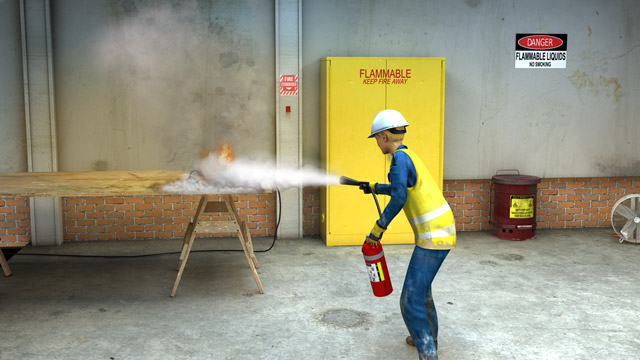




Fire Safety
Every second counts in the event of a fire. In only 30 seconds, small flames can get out of control and turn into a major fire, which can lead to an injury or a fatality. In this course, you will learn about the nature of fire, preventative and protective measures, fire sprinklers, smoke detectors, alarms, fire extinguisher use, evacuation, the stop, drop, and roll procedure, and more.
Request a demoCourse Details
Learning Objectives
• Identify ways the danger of fire can be eliminated or minimized
• Identify and describe the elements necessary for fire
• List methods of fire prevention
• Describe the different fire protection methods
• Describe evacuation procedures
• Differentiate between the classifications of fire
• Describe the rating system used for Class A and B portable fire extinguishers
• List in order the steps for using a portable fire extinguisher (PASS)
• Describe what to do if your or someone else’s clothing catches fire
Specs
| Course Level | Intermediate |
| Languages | English, Arabic, Portuguese, Chinese, Dutch, French, German, Italian, Polish, Russian, Spanish, Czech |
| Compatibility | Audio, Video |
| Based on: | 29 CFR 1910 Subpart L: Fire Protection |
Key Questions
What is fire?
Heat and light energy produced and released during a chemical reaction.
What is the fire tetrahedron?
The four elements necessary to form a fire-heat, fuel, oxygen, and an unrestricted chemical chain reaction.
What is the best way to prevent a fire?
Keeping the three elements of the fire triangle separate-most specifically, keeping heat away from fuel.
What are some effective methods of fire protection
Automatic fire sprinklers, smoke detectors, pull alarms, and evacuation.
How should one use a fire extinguisher?
Use the PASS technique-pull the pin, aim the nozzle at the base of the fire, squeeze the handle, and sweep from side to side at the base of the fire.
When should one use a fire extinguisher (and when should one evacuate instead)?
Only if you’re properly trained, if you’re not endangering yourself or others, if you have a clear evacuation path behind you, and if the fire is small, contained, and hasn’t spread to other materials.
Sample Video Transcript
If at any point your clothing catches on fire, follow the stop, drop and roll procedure. Stop exactly where you are. Drop to the ground. Cover your face with your hands, and roll around to smother the flames. If someone else’s clothes catch on fire, yell to them to stop, drop and roll. And then use a rug, blanket or towel to help smother and extinguish the flames.
Additional Resources
- U.S. Department of Labor’s Occupational Safety & Health Administration (OSHA) – www.osha.gov
- OSHA Safety & Health Topics – www.osha.gov/SLTC/firesafety/
- OSHA Fact Sheet – www.osha.gov/OshDoc/data_General_Facts/FireSafetyN.pdf
- OSHA eTools Evacuation Plans and Procedures – www.osha.gov/SLTC/etools/evacuation/
- National Fire Protection Association (NFPA) – www.nfpa.org
Course Applies To
Demos + Pricing
Learn more about our courses, get pricing, and see our platform.











